May 11, 2023
Why Your City Needs an Urban Agriculture Plan & How to Start One
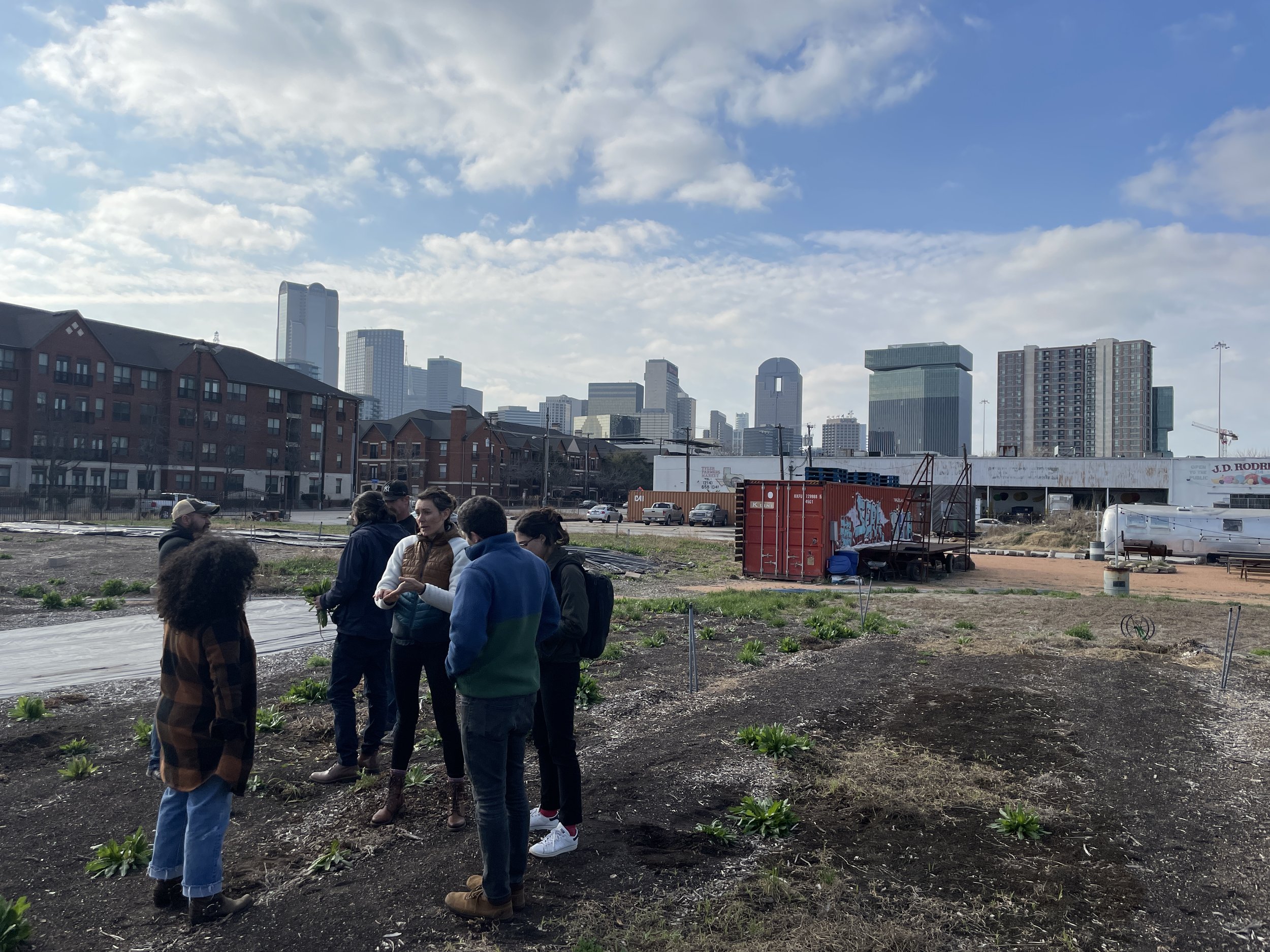
Agritecture’s team with City of Dallas UA Coordinator Rabekha Siebert at F.A.R.M.
Written by: Brakeley Bryant, Christian Kanlian and Jeffrey Landau
May 11, 2023
Cities and their food supplies are facing stressors such as increased urbanization, climate change, extreme weather, a lack of varied production systems and seed genetics, labor shortages, and logistics delays. Food is increasingly coming from fewer, larger farms and travels a greater distance to reach people’s plates. Few city governments have formed plans to ensure their food system is sustainable and resilient in the face of these escalating societal and climate issues, even though it is predicted that by 2050, 80% of our food will be consumed in cities.
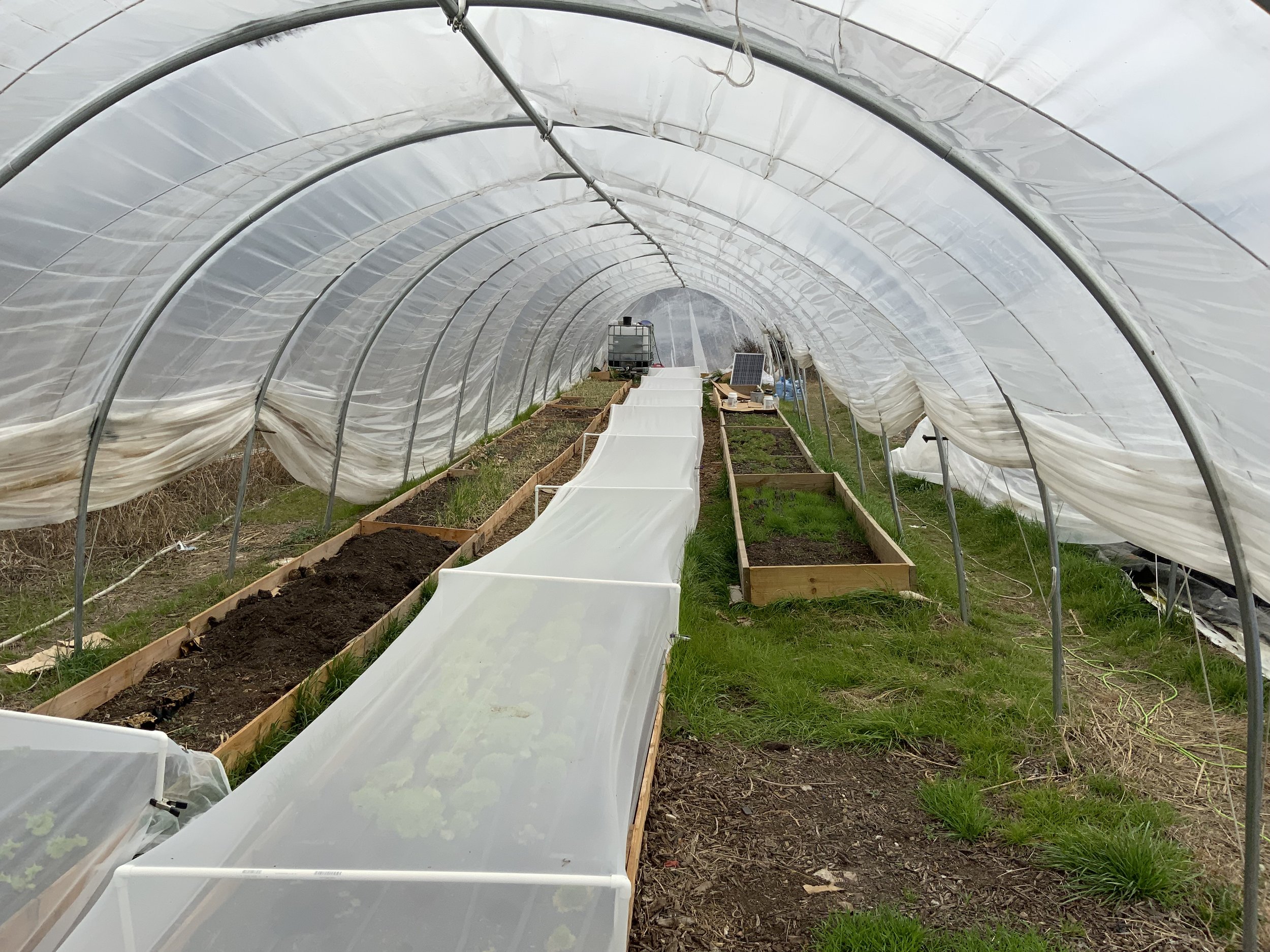
Raised beds at Dallas Half Acre Farm.
The production, processing, transportation, and consumption of food are all part of the intricate web of operations that make up a “food system.” The governance and economics of agriculture, on and off-farm sustainability, systemic food waste, concerning environmental crises, and the deep importance of nutrient-dense food for both individual and population health, are a few of many urgent issues pertaining to food systems today.
In the face of these challenges, urban agriculture (UA) has grown in popularity as a risk mitigation tool for cities. According to the U.S. Department of Agriculture (USDA), “urban agriculture generally refers to the cultivation, processing, and distribution of agricultural products in urban and suburban settings, including things like:
Vertical production
Warehouse farms
Community gardens
Rooftop farms
Hydroponics
Aeroponics
Aquaponic facilities
Other innovations
Urban farmers and gardeners work among diverse populations to expand access to nutritious foods, foster community engagement, provide jobs, educate communities about farming, and expand green spaces.”
Urban agriculture represents both a reactionary and proactive approach to supporting urban food systems.
Reacting to climate change risks, urban agriculture can help mitigate food insecurity and supply chain disruptions caused by extreme weather and labor shortfalls. Proactively, it can also stimulate economic and social growth by creating jobs, strengthening community, and reducing diet-related disease costs.
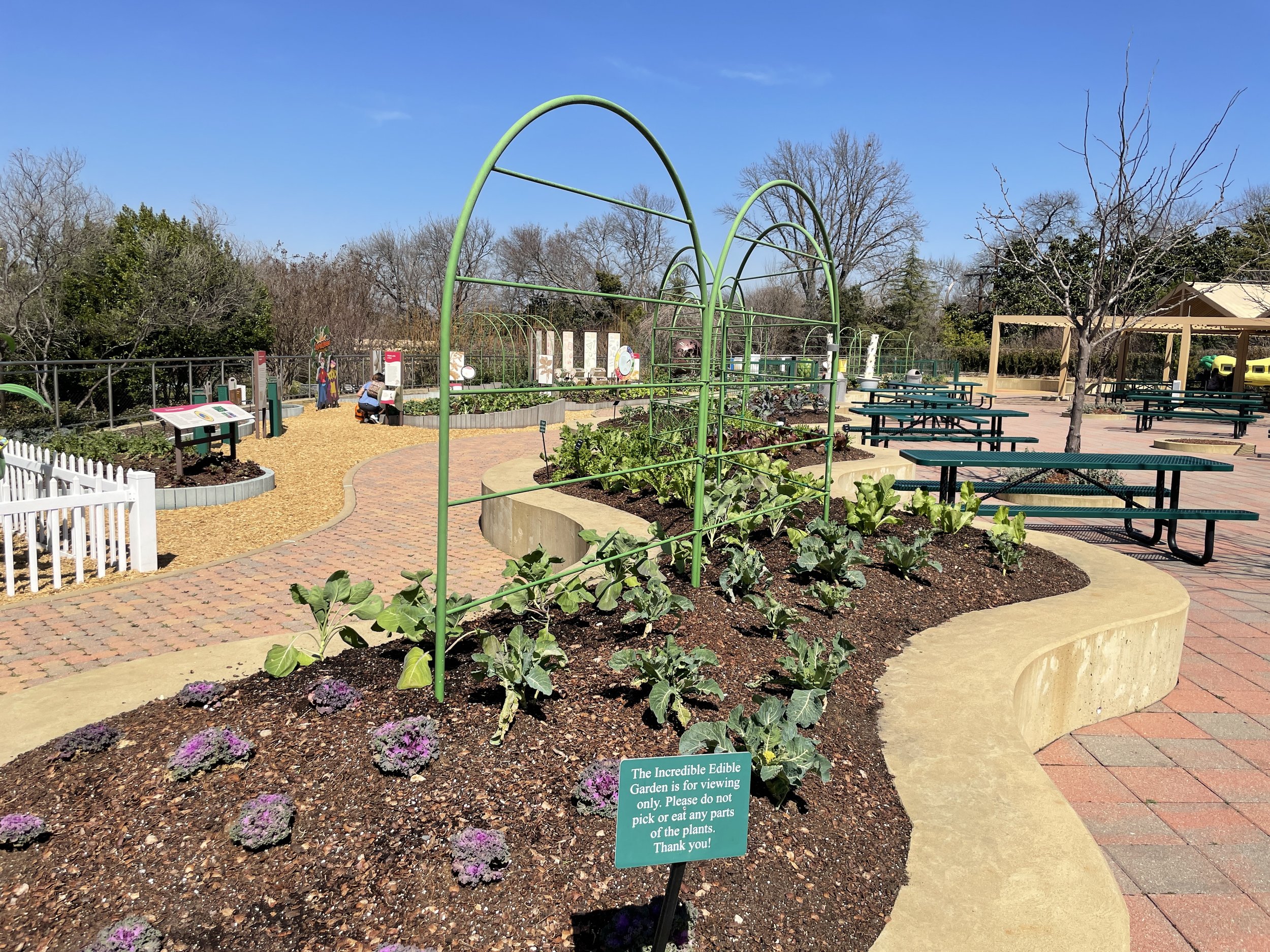
The children's garden at Dallas Arboretum.
As policymakers and food system stakeholders alike realize the importance of localizing food systems and supporting community networks (ecological, social, and economic), it is becoming highly valuable to incorporate urban agriculture into city planning. A thoughtful Comprehensive Urban Agriculture Plan must take into account various factors such as available land, water supply, soil quality, and most importantly, community involvement. Preemptively accounting for these considerations will also ensure that aspects such as building social networks and capacities, developing market infrastructure, and equitable programming are also fulfilled. Below are the necessary steps to guide you through developing a successful Comprehensive Urban Agriculture Plan.
Step 1 - Survey the existing local community
Attempting to weave a new fabric for a city’s food system with urban agriculture is a misguided and ignorant priority when local stakeholders are not put at the center of recommendations and programming. Often, the pieces needed to increase urban agriculture activity and acceptance are already there. The key is to develop the organizational capacity that creates new network connections and/or strengthens existing ones.
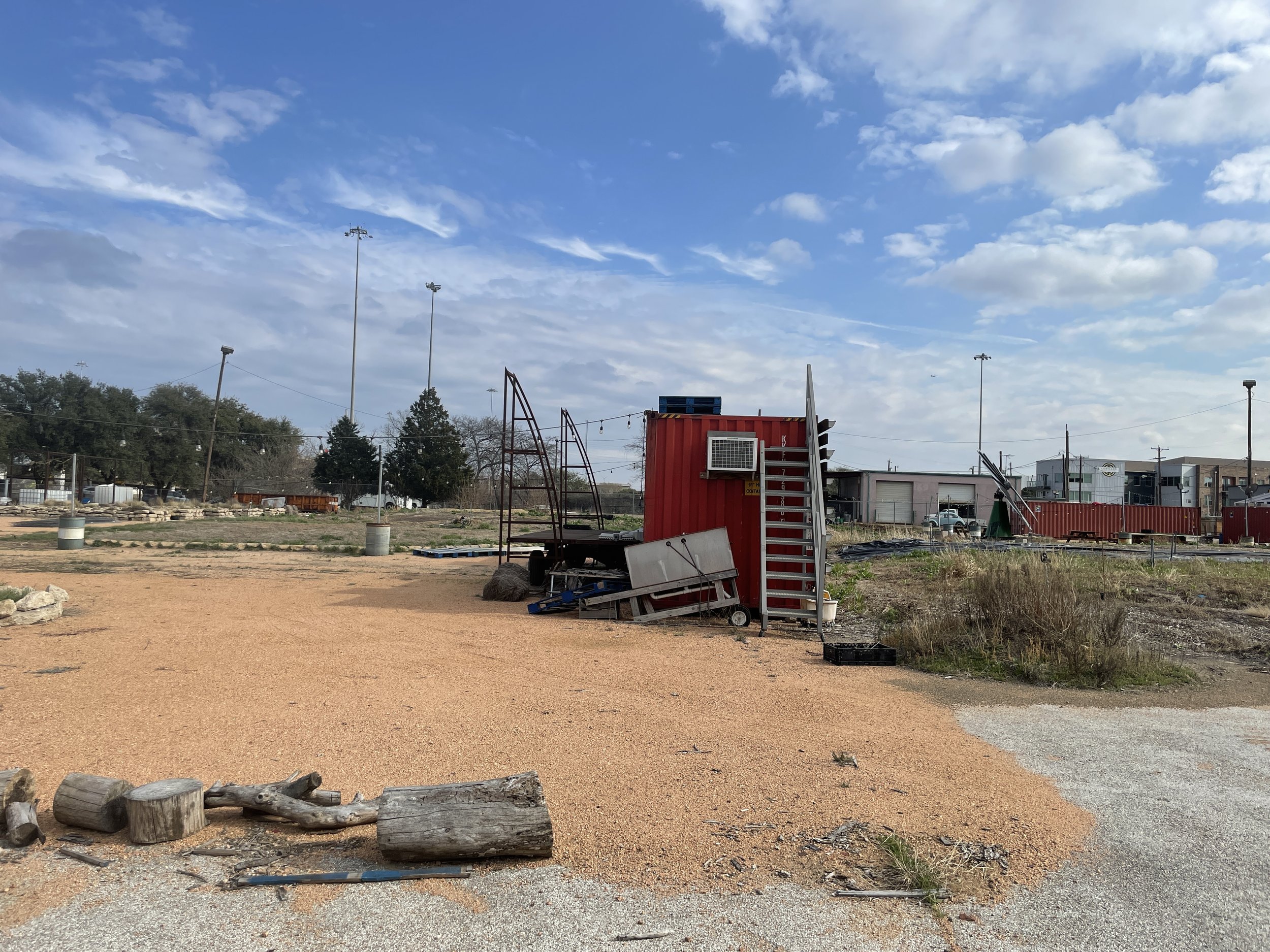
A shipping container transformed into storage, office, and production use at F.A.R.M.
Given the current environmental, economic and social climate–as well as the current “trendiness” of urban agriculture–there are likely already urban agriculture champions in most cities. Moreover, everyone interacts with their city’s food system in one way or another. Getting a sense of where residents at all socio-economic levels believe there are missing resources, weak networks or inequities is crucial to writing urban agriculture “prescriptions”, so to speak. Engaging the community and key stakeholders is also beneficial when assessing whether there are existing urban agriculture models that have been successful in their communities, and what best practices can be drawn from them and expanded. Oftentimes, for various reasons, city governments have not been as supportive or responsive as UA practitioners would have liked, and this has created mistrust and disillusion between the two. Bridging this gap is a crucial activity of any community-serving public policy.
Step 2: Data collection and background mapping
Analyzing the appropriate area's water supply, zoning restrictions, soil quality, existing gardens and farms, as well as the availability of land is crucial to pinpointing where urban agricultural activity should and can be increased. If included within the scope and budget of the planning process, food access must also be considered, both quantitatively (likely through census or local nonprofit data) and qualitatively (through resident interviews and surveys). Considering both existing and potentially new access points is essential as well, including both private entities like grocery stores, churches, convenience stores, and discount retailers as well as publicly funded sites- like public transit stops, afterschool meal sites, and senior centers.
The strengths and weaknesses of the land and resources that are available for urban agriculture should be outlined by this assessment. Working with the chosen city’s geographic information systems (GIS) team can prove hugely beneficial in this step, as they likely have, or know of an organization that has, relevant data on the above categories already. If it is expected that primary data will need to be collected at this stage, allowing extra time and resources for collection and mapping should be discussed at the beginning of the project to ensure a smoother process overall.
Step 3: Engage the city or municipality departments directly

Jeffrey Landau presenting Agritecture’s GIS analysis of UA opportunities.
While a Comprehensive Urban Agriculture Plan will typically fall under a city’s planning or environmental quality departments, a myriad of other departments can also influence the efficacy of proposed recommendations within the plan. Some other offices whose consulting would be beneficial include, but are not limited to:
Code Department/ Office
Economic Department/ Office
Water Utility Department/ Office
Transportation Department/ Office
Community Engagement or Care/ Equity Department/ Office
City Attorney’s Office
Data Analytics & Business Intelligence Department/ Office
Land Bank Programs
Housing Department/ Office
Parks and Recreation Department
Public Works Department
Step 4: Data Analysis
Analysis should follow a prescriptive methodology, either one previously established (like the Social Vulnerability Index from the CDC) or a bespoke procedure unique to the City’s particular challenges and opportunities (such as the one Agritecture developed for Dallas). Various sub-frameworks and methodologies can also be used to group data points into potential recommendation areas, such as thematic analysis or a S.W.O.T. analysis.
Put simply, an urban agriculture planner should go about data analysis by conducting the following four steps: (1) familiarizing themselves with the available data, (2) identifying an evaluation framework (3) indexing or classifying the data, and (4) visualizing the data to generate a recommendation narrative. Crucially, all these steps must be performed at least somewhat transparently if local residents are likely to support the plan’s presentation before City Council or the Mayor for approval.
If data analysis is conducted methodically, the beginning recommendations for a Comprehensive Urban Agriculture Plan should flow easily. The development of key recommendations is a crucial point in the planning process, so it is important to consider findings from the data as preliminary. All recommendations should have substantial numerical and anecdotal backing. Frequent categories found in existing Comprehensive Urban Agriculture Plans include identifying optimal land parcels for urban agriculture use, amending city codes and zoning ordinances to reduce roadblocks to UA activities, building market infrastructure, and establishing and strengthening network connections, among others.
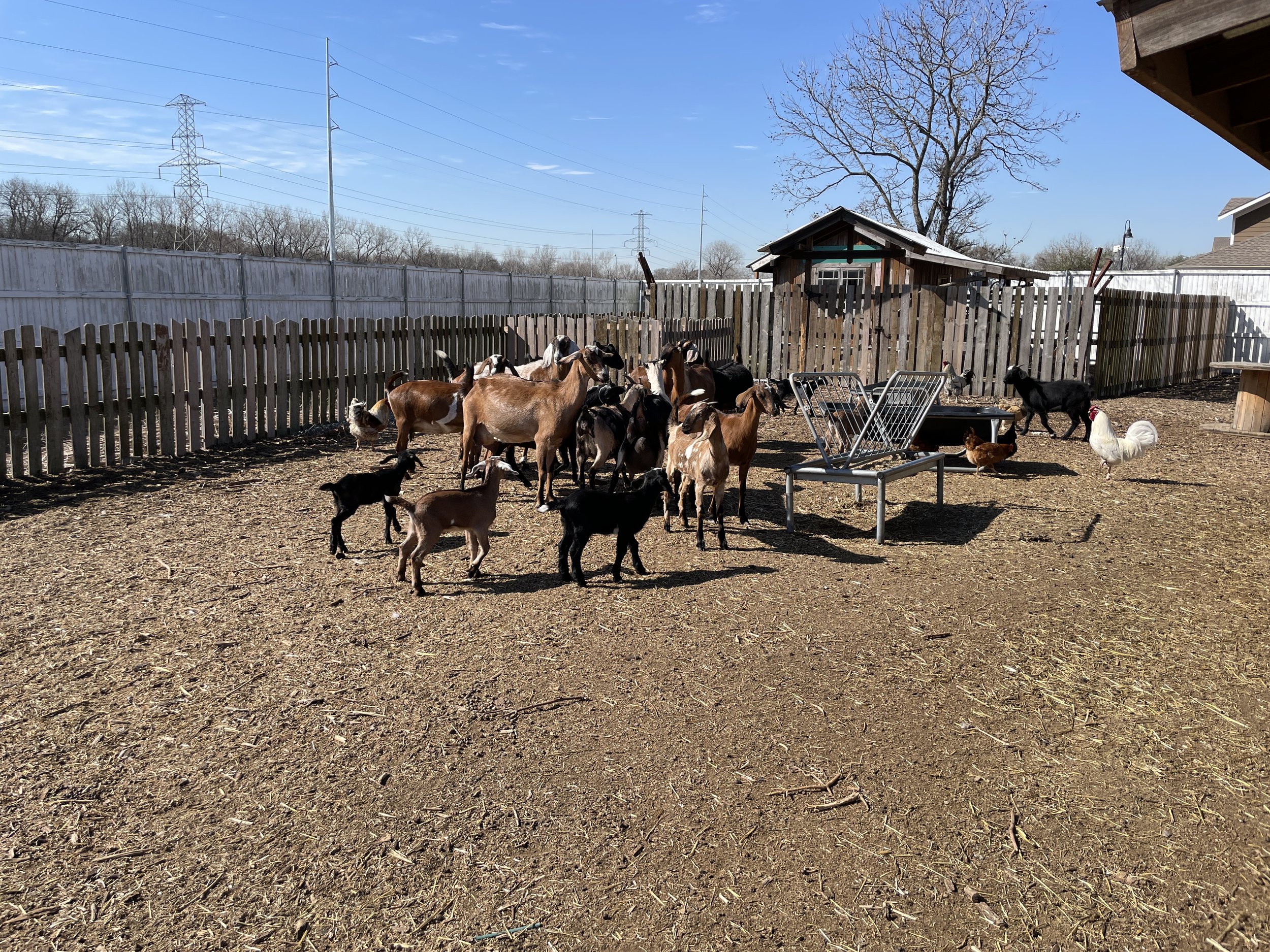
Goats at Bonton Farms.
After drafting initial recommendations, it is important to hold space for community feedback to ensure that the plan is fulfilling community needs and will be well received once implemented. It is a tall feat to incorporate not only a deluge of data into a Comprehensive Urban Agriculture Plan, but also the intended meaning behind that data– particularly in the case of anecdotal or qualitative accounts.
Expecting to produce the right “prescriptions” on the first attempt is generally unrealistic, and tweaks will inevitably need to be made. Giving the community a chance to digest and familiarize themselves with the proposed recommendations not only supports their right to a line of agency over their city’s future, it also can encourage community leaders to become champions of the plan, which will help later on in the adoption and implementation stage.
Finally, drafting and publishing the recommendations. Many underestimate the time this step will take, especially as feedback is incorporated. Proposed city plans often need to go through several rounds of committee and stakeholder presentations before being proposed to a city council for adoption. Furthermore, minute aspects such as formatting and design and translation into multiple languages can delay this process significantly– particularly if there are last minute edits.
Once approved by City Council, the Mayor, or other relevant bodies, the CUAP becomes the official policy of the city in question! This gives strength to city officials and employees to prioritize funding according to its recommendations, arguing that they have the public’s support behind them. This can expedite the arduous process of passing relevant code, zoning, and other legislative or procedural changes as recommended in the Plan. These subsequent implementation steps must be supported by the appropriate number of staff and city resources. In fact, budgeting for additional staff positions is often one of the first questions asked during the Plan approval and adoption process.
Additionally, ongoing community engagement is absolutely essential to a healthy, productive UA ecosystem: one in which both private and public stakeholders, farms, gardeners and businesses have reliable access to city officials, permitting approvals, and other relevant resources. Oftentimes, the local perception of this access is just as (or more!) important as their theoretical guidelines on paper.
We hope this has been a useful introduction to the importance of a Comprehensive Urban Agriculture Plan. Excited to see your city create one? Join Agritecture’s upcoming webinar on Policy Guidelines for the Future of Urban Agriculture to learn more about CUAP.
